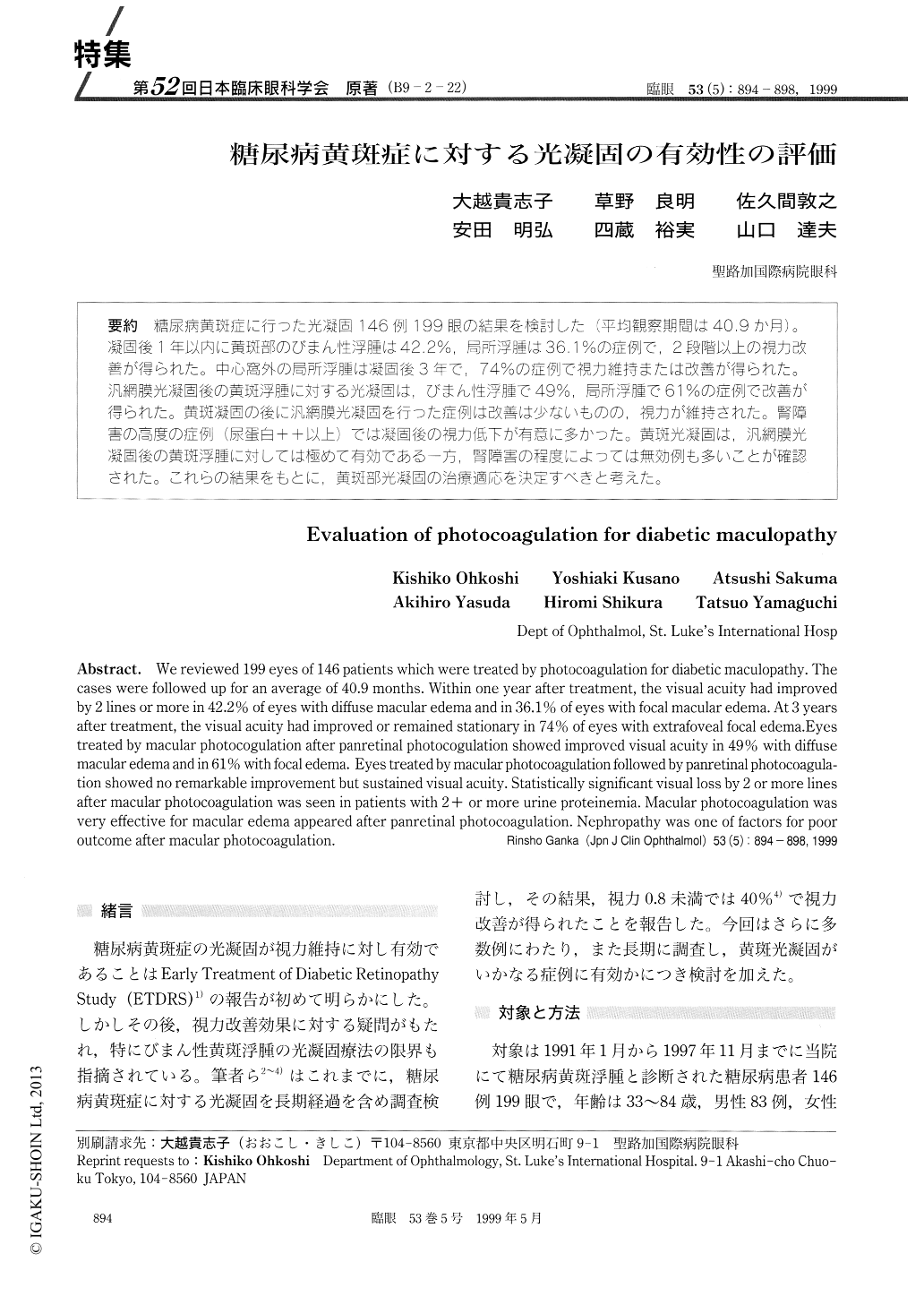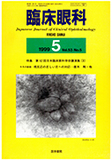Japanese
English
- 有料閲覧
- Abstract 文献概要
- 1ページ目 Look Inside
(B9-2-22) 糖尿病黄斑症に行った光凝固146例199眼の結果を検討した(平均観察期間は40.9か月)。凝固後1年以内に黄斑部のびまん性浮腫は42.2%,局所浮腫は36.1%の症例で,2段階以上の視力改善が得られた。中心窩外の局所浮腫は凝固後3年で,74%の症例で視力維持または改善が得られた。汎網膜光凝固後の黄斑浮腫に対する光凝固は,びまん性浮腫で49%,局所浮腫で61%の症例で改善が得られた。黄斑凝固の後に汎網膜光凝固を行った症例は改善は少ないものの,視力が維持された。腎障害の高度の症例(尿蛋白++以上)では凝固後の視力低下が有意に多かった。黄斑光凝固は,汎網膜光凝固後の黄斑浮腫に対しては極めて有効である一方,腎障害の程度によっては無効例も多いことが確認された。これらの結果をもとに,黄斑部光凝固の治療適応を決定すべきと考えた。
We reviewed 199 eyes of 146 patients which were treated by photocoagulation for diabetic maculopathy. The cases were followed up for an average of 40.9 months. Within one year after treatment, the visual acuity had improved by 2 lines or more in 42.2% of eyes with diffuse macular edema and in 36.1% of eyes with focal macular edema. At 3 years after treatment, the visual acuity had improved or remained stationary in 74% of eyes with extrafoveal focal edema.Eyes treated by macular photocogulation after panretinal photocogulation showed improved visual acuity in 49% with diffuse macular edema and in 61% with focal edema. Eyes treated by macular photocoagulation followed by panretinal photocoagula-tion showed no remarkable improvement but sustained visual acuity. Statistically significant visual loss by 2 or more lines after macular photocoagulation was seen in patients with 2+ or more urine proteinemia. Macular photocoagulation was very effective for macular edema appeared after panretinal photocoagulation. Nephropathy was one of factors for poor outcome after macular photocoagulation.

Copyright © 1999, Igaku-Shoin Ltd. All rights reserved.


